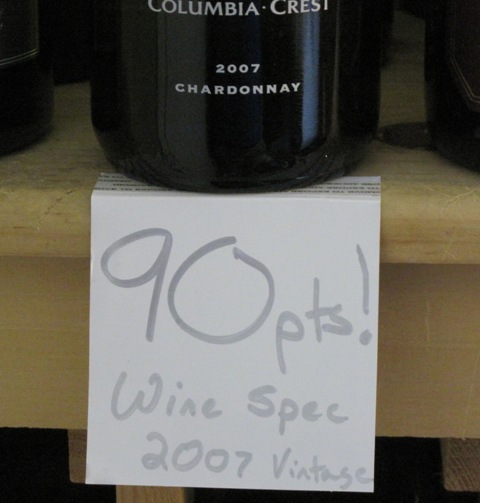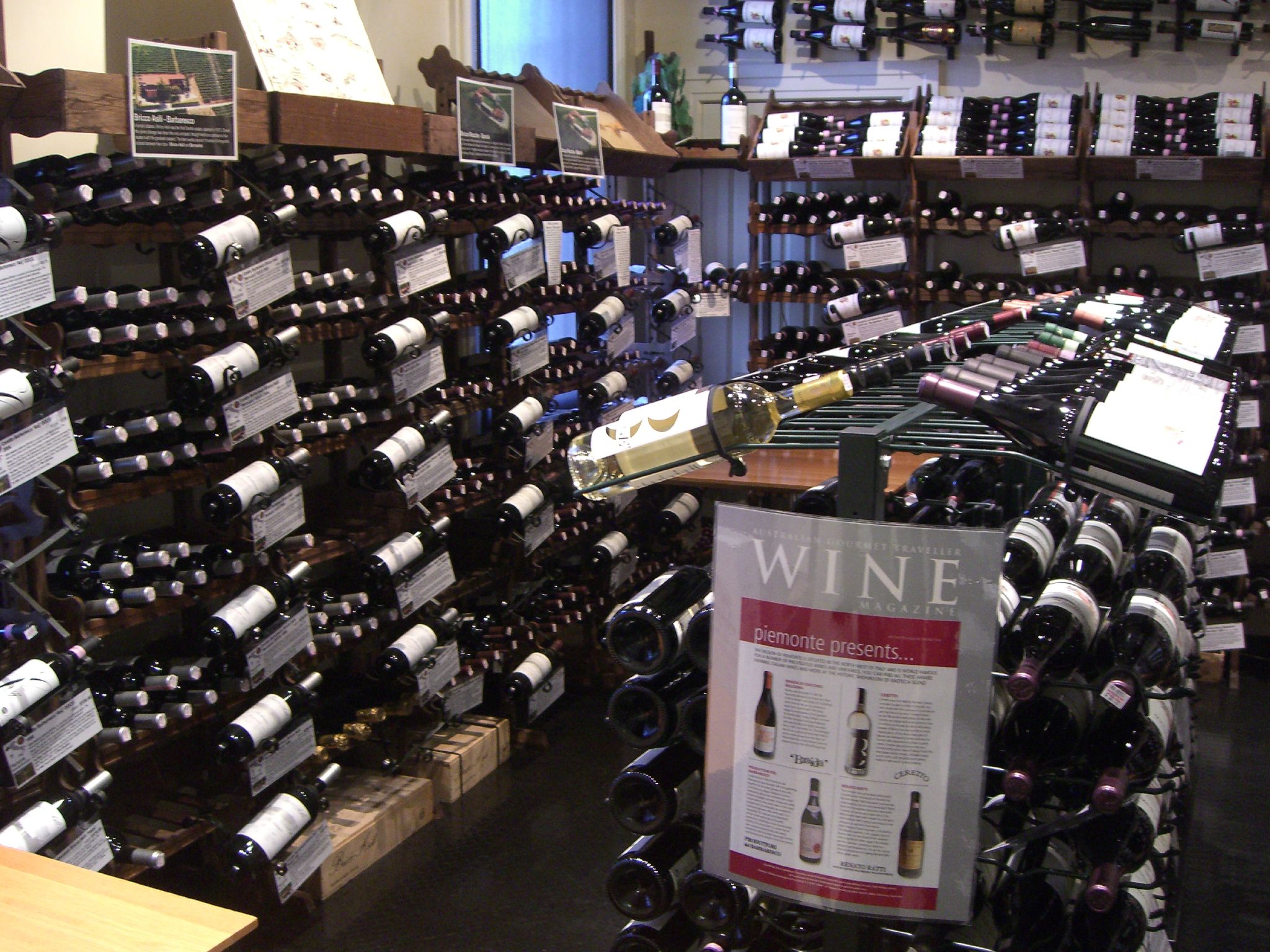Rating (wine) on:
[Wikipedia]
[Google]
[Amazon]
 A wine rating is a score assigned by one or more wine critics to a wine tasted as a summary of that critic's evaluation of that
A wine rating is a score assigned by one or more wine critics to a wine tasted as a summary of that critic's evaluation of that
 While the composition of tasting notes and other forms of wine literature has existed throughout the
While the composition of tasting notes and other forms of wine literature has existed throughout the
 The numerical wine rating system has been heavily criticized.W. Blake-Gray
The numerical wine rating system has been heavily criticized.W. Blake-Gray
Are ratings pointless?
''San Francisco Chronicle'', June 14, 2007 It has been considered a driving force in the globalization of wine and the downplaying of the influence of ''
Wine ratings just part of the equation
''Eugene Register Guard'', September 15, 2003 * P. Hellman
Blind-Tasting Follies
''The New York Sun'', March 30, 2005 * H. Hubbard-Preston
''The New York Times'', December 13, 2003 * D. Darlington
''The New York Times'', August 7, 2005 {{portal bar, Drink Wine Wine classification
wine
Wine is an alcoholic drink made from Fermentation in winemaking, fermented fruit. Yeast in winemaking, Yeast consumes the sugar in the fruit and converts it to ethanol and carbon dioxide, releasing heat in the process. Wine is most often made f ...
. A wine rating is therefore a subjective quality score, typically of a numerical nature, given to a specific bottle of wine. In most cases, wine ratings are set by a single wine critic, but in some cases a rating is derived by input from several critics tasting the same wine at the same time. A number of different scales for wine ratings are in use. Also, the practices used to arrive at the rating can vary. Over the last couple of decades, the 50–100 scale introduced by Robert M. Parker, Jr. has become commonly used. This or numerically similar scales are used by publications such as '' Wine Enthusiast'', '' Wine Spectator'', and '' Wine Advocate''. Other publications or critics, such as Jancis Robinson
Jancis Mary Robinson OBE, ComMA, MW (born 22 April 1950) is a British wine critic, journalist and wine writer. She currently writes a weekly column for the ''Financial Times'', and writes for her website JancisRobinson.com, updated daily. She ...
and Michael Broadbent, may use a 0–20 scale, or a 0–5 scale (often in terms of numbers of stars) either with or without half-star steps.J. Robinson ''Jancis Robinson's Wine Course'' Third Edition pp. 19, 283–286 Abbeville Press 2003
In recent years, with the advent of aggregated user-generated ratings, there has also proliferated group rating systems, such as the one employed by CellarTracker, using input from non-professional wine tasters who taste under differing conditions. In addition to a simple numerical score, most wine ratings are meant to supplement the wine tasting
Wine tasting is the sensory examination and evaluation of wine. While the practice of wine tasting is as ancient as its production, a more formalized methodology has slowly become established from the 14th century onward. Modern, professional w ...
notes, which are brief descriptions of the wine critic's overall impression of the wine, including its flavor qualities. However, often the emphasis (in particular in marketing) is on the score applied by a critic rather than on the total wine tasting note.J. Robinson (ed) ''"The Oxford Companion to Wine"'' Third Edition pp. 616–617 Oxford University Press 2006
History
 While the composition of tasting notes and other forms of wine literature has existed throughout the
While the composition of tasting notes and other forms of wine literature has existed throughout the history of wine
The oldest evidence of ancient wine production has been found in Georgia from BC (the earliest known traces of grape wine),
Greece from BC, Armenia from BC (large-scale production), and Sicily from BC.
The earliest evidence of fermente ...
, the widespread use of numerical rating systems is a relatively recent phenomenon. During the mid 20th century, as American interest in wine was developing, consumers found themselves being introduced to a wide assortment of wines from across the globe. This surplus of available options created a niche market for critics who could provide a service in reviewing wines and making recommendations that could make the buying process easier for consumers. Following a pattern similar to the product reviews of such consumer magazines like ''Consumer Reports
Consumer Reports (CR), formerly Consumers Union (CU), is an American nonprofit consumer organization dedicated to independent product testing, investigative journalism, consumer-oriented research, public education, and consumer advocacy.
Founded ...
'' and ''Which?
''Which?'' is a United Kingdom brand name that promotes informed consumer choice in the purchase of goods and services by testing products, highlighting inferior products or services, raising awareness of consumer rights, and offering indepen ...
'', American critics began writing more condensed wine reviews that consumers could scan through briefly to identify wines of interest. The popularization of numerical scoring is widely credited to the American wine critic Robert Parker who patterned his system of numerical ratings on the American standardized grading system in the 1970s.
Under Parker's system, wines were evaluated on a 50–100 scale that roughly correlated to an A–F "grade" on the wine. A wine was considered "above average" or "good" if it got a score of at least 85 points. Readers of wine rating magazines such as Parker's ''The Wine Advocate'', or its later imitators such as ''Wine Spectator'' and ''The Wine Enthusiast'', could quickly at glance see a review of several dozen or even hundreds of available wines broken down into numerical evaluations. These consumers could isolate a range of scores to concentrate their buying purchase on without ever having to try a wine beforehand. Similarly, wine retailers and merchants found themselves with a ready made marketing tool that didn't even require them to research or sample the wine before they put it on sale.
The popularity of numerical wine ratings became a boon for the wine retailing industry. Wines that received scores classified as "outstanding" (usually 90 points or above) were essentially guaranteed favorable sales in the market. Wines that received "extraordinary" or "classic" ratings of 95–100 began to develop cult followings that, coupled with the limited production, helped to skyrocket their prices. A segment of investment wine
Investment wine, like gold bullion, rare coins, fine art, and tulip bulbs, is seen by some as an alternative investment other than the more traditional investment holdings of stocks, bonds, cash, or real estate. While most wine is purchased w ...
emerged that aimed to capitalize on the speculation and eventual price increase surrounding highly scoring wines. The influence of wine ratings was particularly keen in the developing wine markets of Asia, Russia and South America at the turn of the 21st century.
Criticism
 The numerical wine rating system has been heavily criticized.W. Blake-Gray
The numerical wine rating system has been heavily criticized.W. Blake-GrayAre ratings pointless?
''San Francisco Chronicle'', June 14, 2007 It has been considered a driving force in the globalization of wine and the downplaying of the influence of ''
terroir
(; ; from ''terre'', ) is a French language, French term used to describe the environmental factors that affect a crop's phenotype, including unique environment contexts, farming practices and a crop's specific growth habitat. Collectively, th ...
'' and individuality in wine making. Critics of the wine rating system contend that the economic and marketing power of receiving favorable scores by influential critics has steered global winemaking towards producing a homogeneous
Homogeneity and heterogeneity are concepts relating to the uniformity of a substance, process or image. A homogeneous feature is uniform in composition or character (i.e., color, shape, size, weight, height, distribution, texture, language, i ...
style that is perceived as appealing to the critics. These critics point to what they contend is an inherent flaw in sampling a wide assortment of wines at once. When compared together, wines (particular red) that have deep colors
Color (or colour in Commonwealth English; see spelling differences) is the visual perception based on the electromagnetic spectrum. Though color is not an inherent property of matter, color perception is related to an object's light absorpt ...
, full bodied, stronger, concentrated flavors
Flavour or flavor is either the sensory perception of taste or smell, or a flavoring in food that produces such perception.
Flavour or flavor may also refer to:
Science
* Flavors (programming language), an early object-oriented extension to L ...
and smooth mouthfeel
Mouthfeel refers to the physical sensations in the mouth caused by food or drink, making it distinct from taste. It is a fundamental sensory attribute which, along with taste and smell, determines the overall flavor of a food item. Mouthfeel i ...
tend to stand out from the assortment more than wines with more subtle characteristics. These wines tend to receive more favorable wine ratings which have led to an increase in the proliferation of these styles of wines on the market.
References
External links
* R. RutanWine ratings just part of the equation
''Eugene Register Guard'', September 15, 2003 * P. Hellman
Blind-Tasting Follies
''The New York Sun'', March 30, 2005 * H. Hubbard-Preston
''The New York Times'', December 13, 2003 * D. Darlington
''The New York Times'', August 7, 2005 {{portal bar, Drink Wine Wine classification